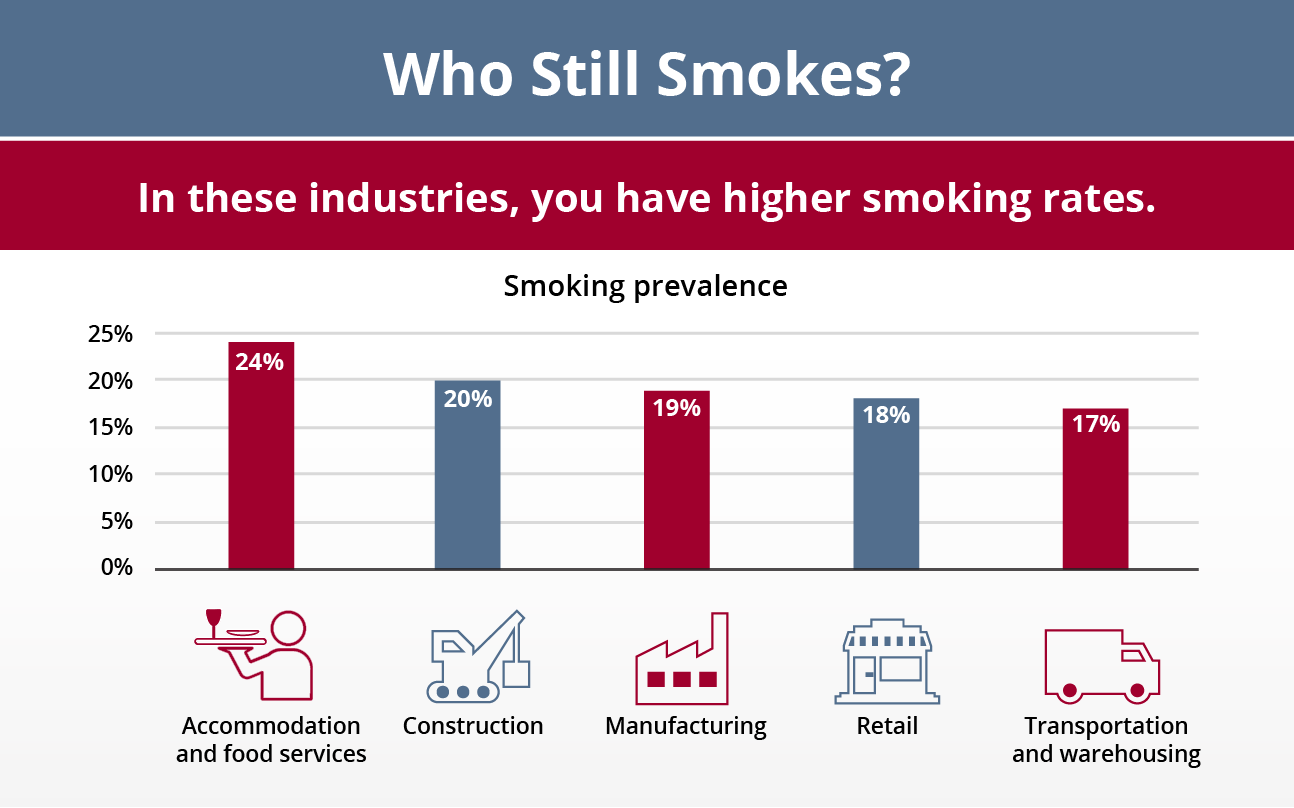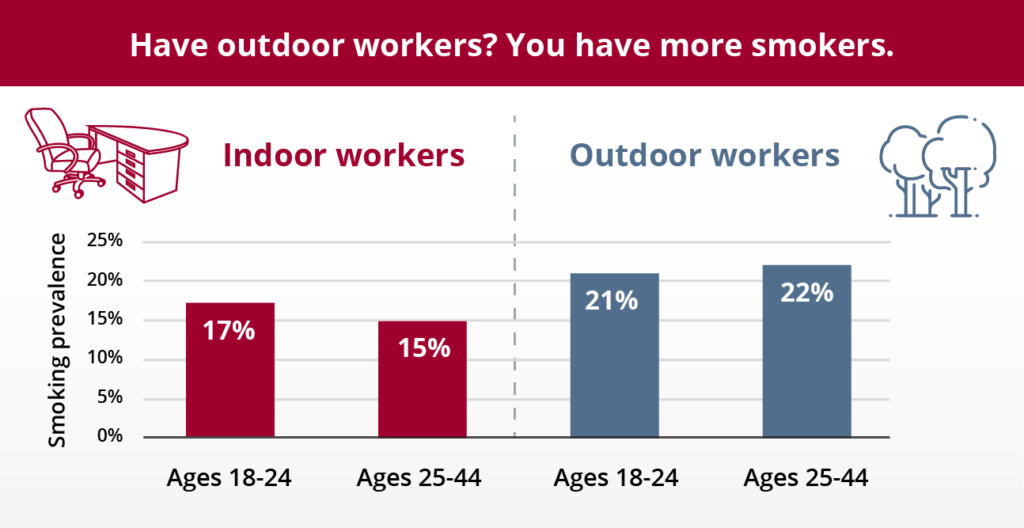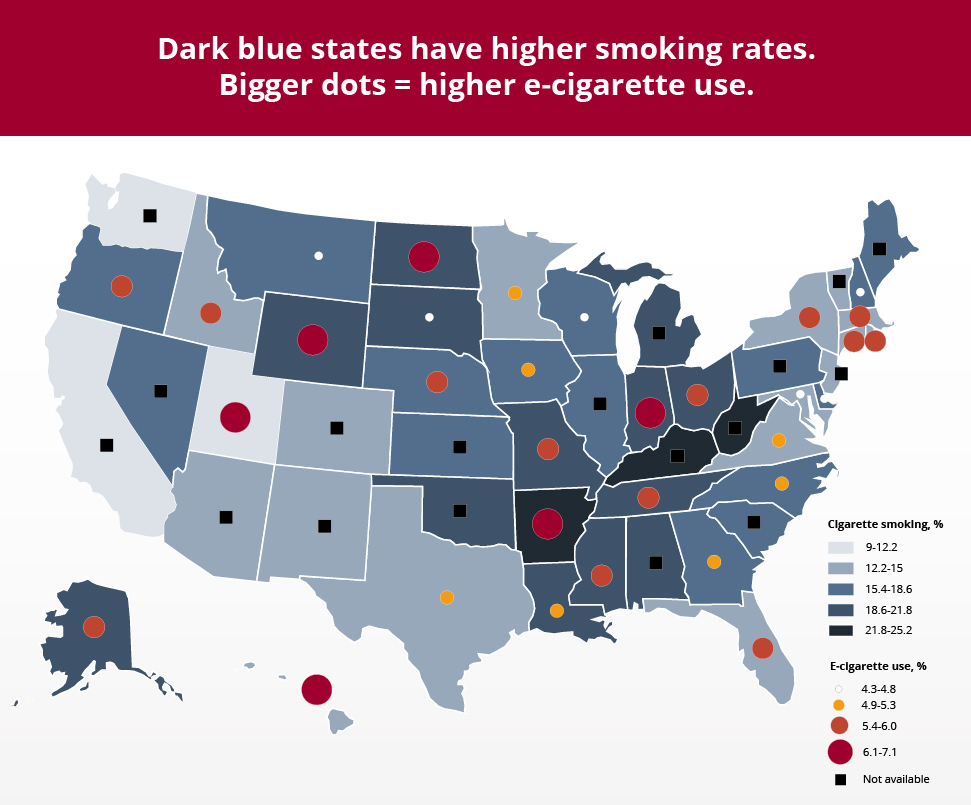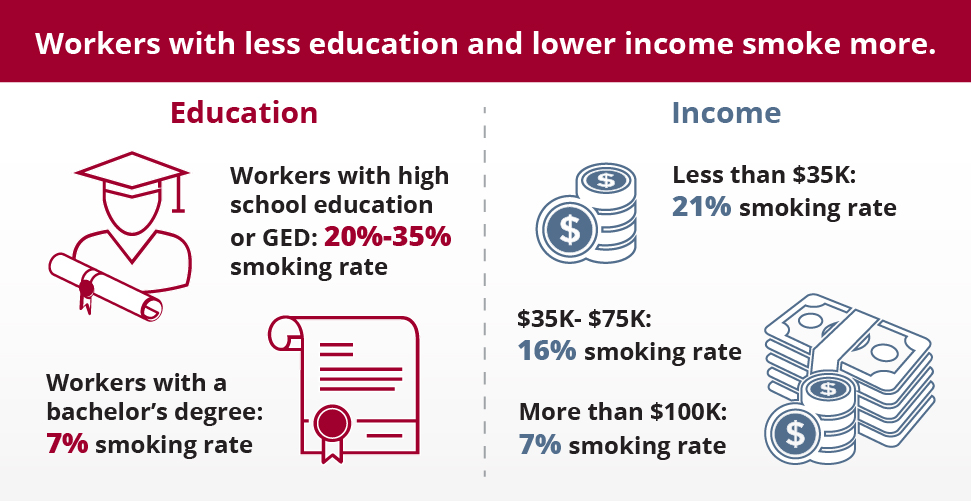Now that smoking in the workplace is no longer an issue, companies can solely focus on other wellbeing strategies, right?
Unfortunately not.
Because smoking in the workplace today isn’t always obvious, that’s led some employers to believe this type of addiction isn’t a big issue anymore. Out of sight, out of mind, out of HR planning.
That misperception can be very costly on multiple levels—from direct productivity losses to higher healthcare expenditures. Even worse, it means those who do smoke won’t get the help they need.
Who Still Smokes?
While it’s true there have been some decreases in smoking rates in certain geographic areas, the fight is far from over. There is an epidemic rise of e-cigarette use among youth. And as stress has surged during the pandemic, quitlines have seen a significant decline in calls from tobacco users looking for help to quit.
One study found that in the U.S., as many 1 in 4 adults were current cigarette smokers (West Virginia); 1 in 10 adults currently used smokeless tobacco products (Wyoming); and 1 in 15 adults currently used e-cigarettes (Oklahoma).
Here’s a deeper look at who’s still smoking in the workplace.
The Truth about Smoking in the Workplace
Look around your workplace. Can you tell which employees use tobacco products and which don’t? While some take smoke breaks, others might use e-cigarettes that don’t require ducking outside to light up if your indoor smoking policy doesn’t include vaping. Even those who do smoke cigarettes could go off-site to light up.
Simply put, you likely don’t know the extent of the issue at your company. But one thing is certain: You can make a significant difference when it comes to changing the numbers.
Building Awareness, Reducing Prevalence
According to the Centers for Disease Control, tobacco use is still the single most preventable cause of disease, disability, and death in the United States–more than being sedentary, more than obesity, more than poor nutrition.
Becoming aware of the continuing use of tobacco is the first big step toward change. The next is to focus on reducing that usage.
For that, you need an evidence-based cessation program that works for every tobacco user in your organization and helps them quit in the way they prefer. For example, more of today’s tobacco users would rather use text, email, and online chat than traditional phone coaching.
A meaningful tobacco cessation program is one that people actually use. When they can get support and resources anytime through digital interventions, it increases their likelihood of quitting for good.
Even if you don’t know all of the smokers or other tobacco users in your organization, you can help every one of them. Visit our program page to learn more about an innovative, effective quitting experience for tobacco users of all types—from smokers to e-cigarette users to chewing tobacco users.
For more information on tobacco use prevalence and the cost to employers, see our blogs What CDC’s Latest Statistics on Smoking Reveal and How Much Does Vaping Cost Individuals and Employers?








